🏥 Public Health: Essential Concepts for Reading Comprehension
Public health focuses on promoting and protecting the health of populations through education, policy-making, research, and preventive healthcare. Unlike clinical medicine, which addresses individual health, public health emphasizes societal well-being. RC passages on public health often delve into topics like disease prevention, healthcare access, and social determinants of health. Understanding these concepts allows readers to critically analyze issues related to community health and wellness.
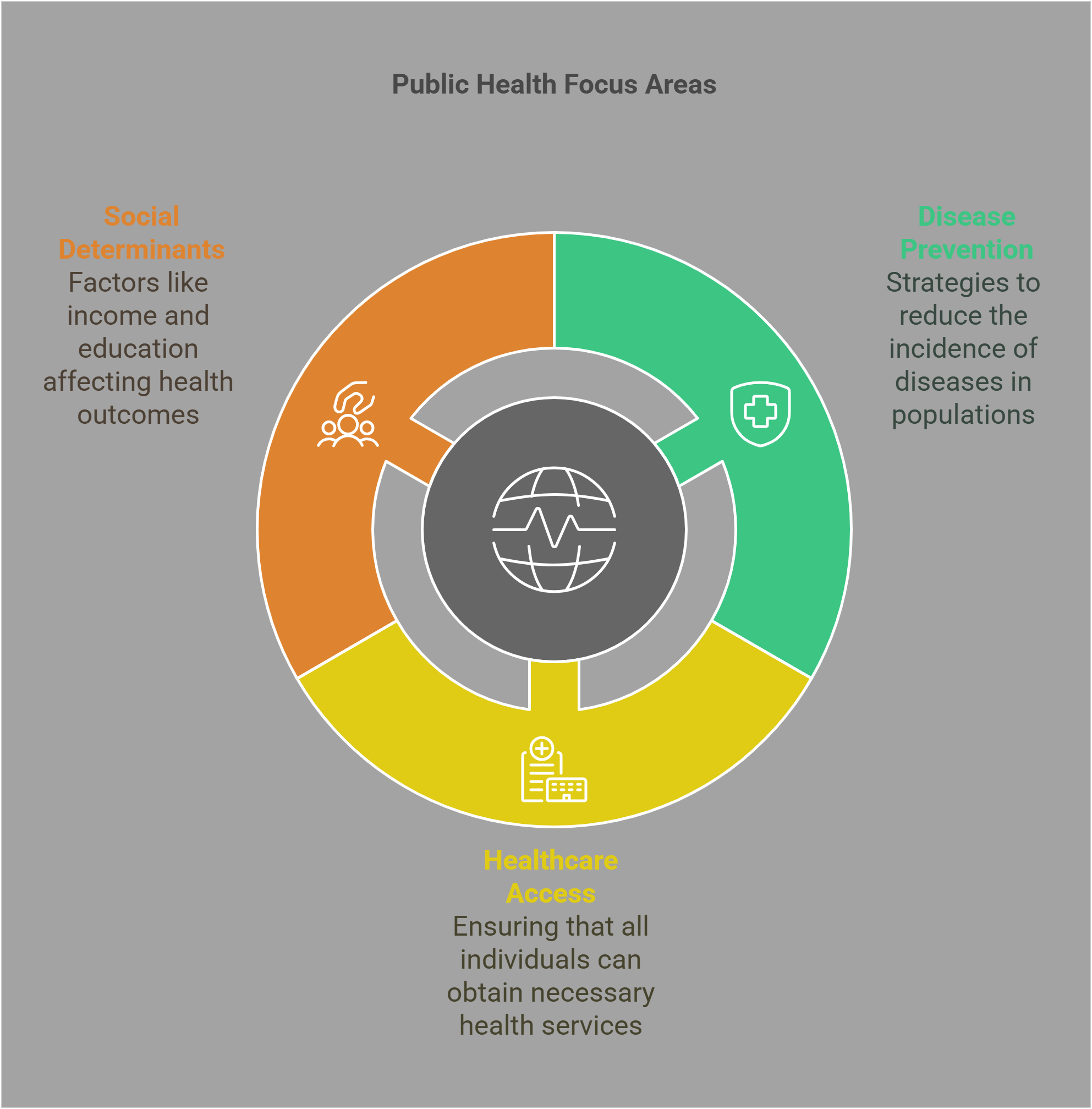
📋 Overview
This guide will explore the following essential public health concepts:
- Definition and Scope of Public Health
- Social Determinants of Health
- Public Health Infrastructure
- Disease Prevention and Control
- Health Equity and Disparities
- Global Health and International Cooperation
- Role of Vaccination in Public Health
- Behavioral and Mental Health in Public Health
- Public Health Policy and Advocacy
- Challenges in Modern Public Health
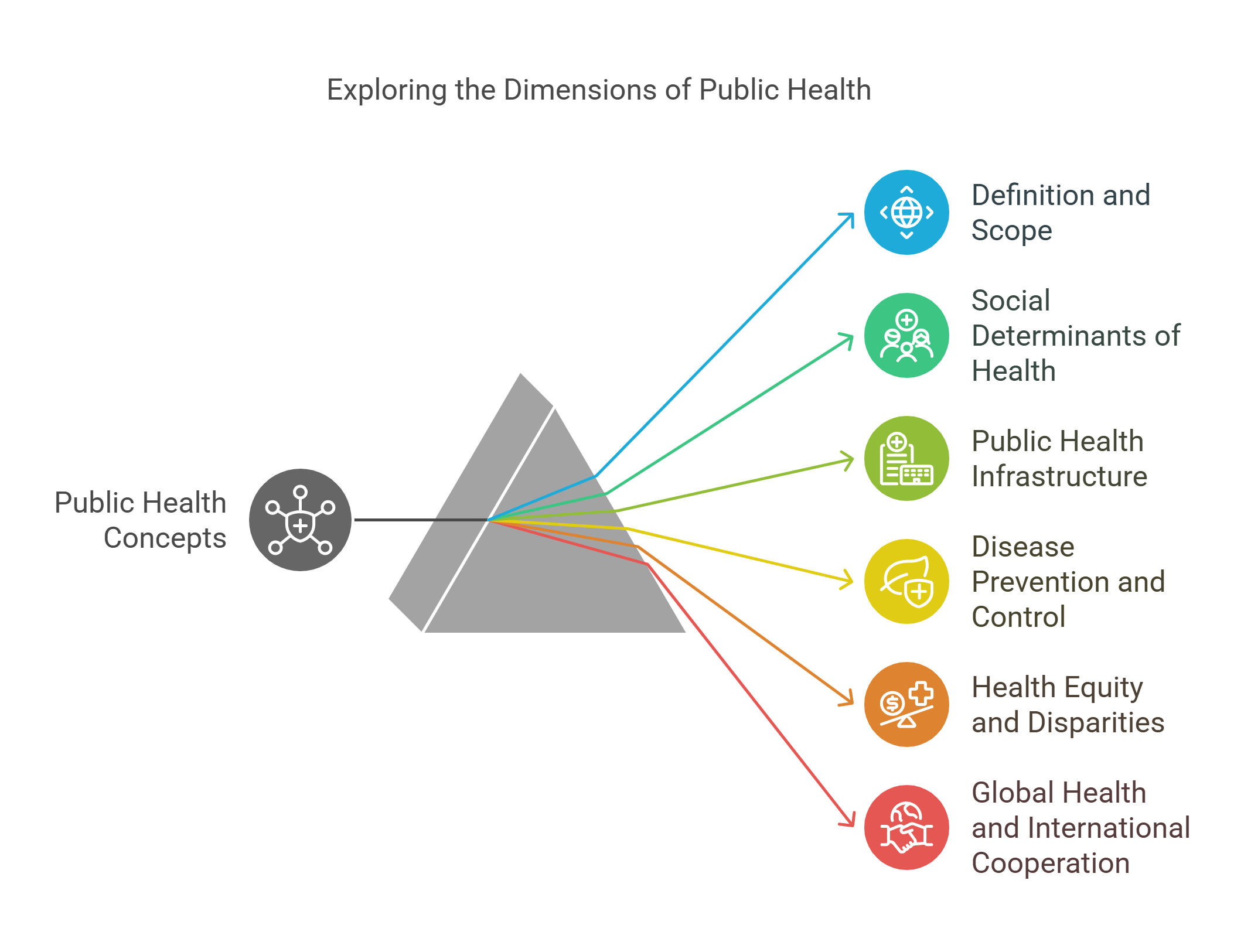
🔍 Detailed Explanations
1. Definition and Scope of Public Health
Public health encompasses efforts to improve the health of entire communities by preventing illness, promoting healthy behaviors, and addressing systemic barriers to well-being.
- Core Functions:
- Assessment: Identifying community health needs and risks.
- Policy Development: Designing strategies to improve health outcomes.
- Assurance: Ensuring access to essential healthcare services.
- Scope: Includes health promotion, disease prevention, environmental health, and emergency preparedness.
Example: Efforts to reduce smoking rates through public awareness campaigns and tobacco taxation.
Explained Simply: Public health is like a community’s health coach, working to keep everyone healthier and safer.
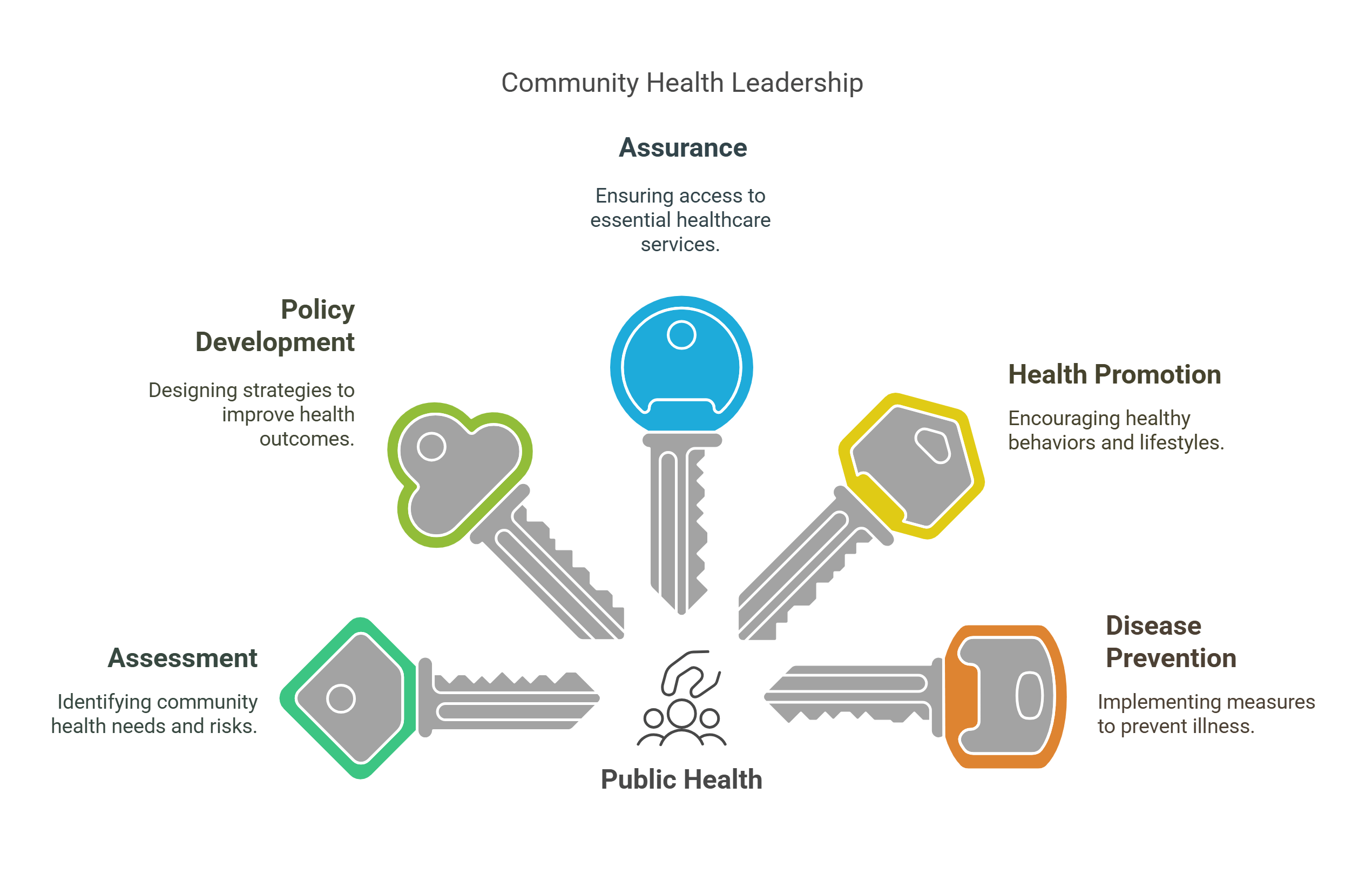
2. Social Determinants of Health
Social determinants are the conditions in which people are born, live, work, and age that influence health outcomes.
- Key Determinants:
- Economic Stability: Income levels and job security.
- Education: Access to quality education improves health literacy.
- Healthcare Access: Availability of affordable medical services.
- Neighborhoods: Safe housing and clean environments.
- Examples: People in low-income neighborhoods often have higher rates of chronic diseases due to limited access to nutritious food and healthcare.
Impact: Addressing social determinants improves health equity and reduces disparities.
Explained Simply: Social determinants are like the building blocks of health—when one is missing, the whole structure is weaker.
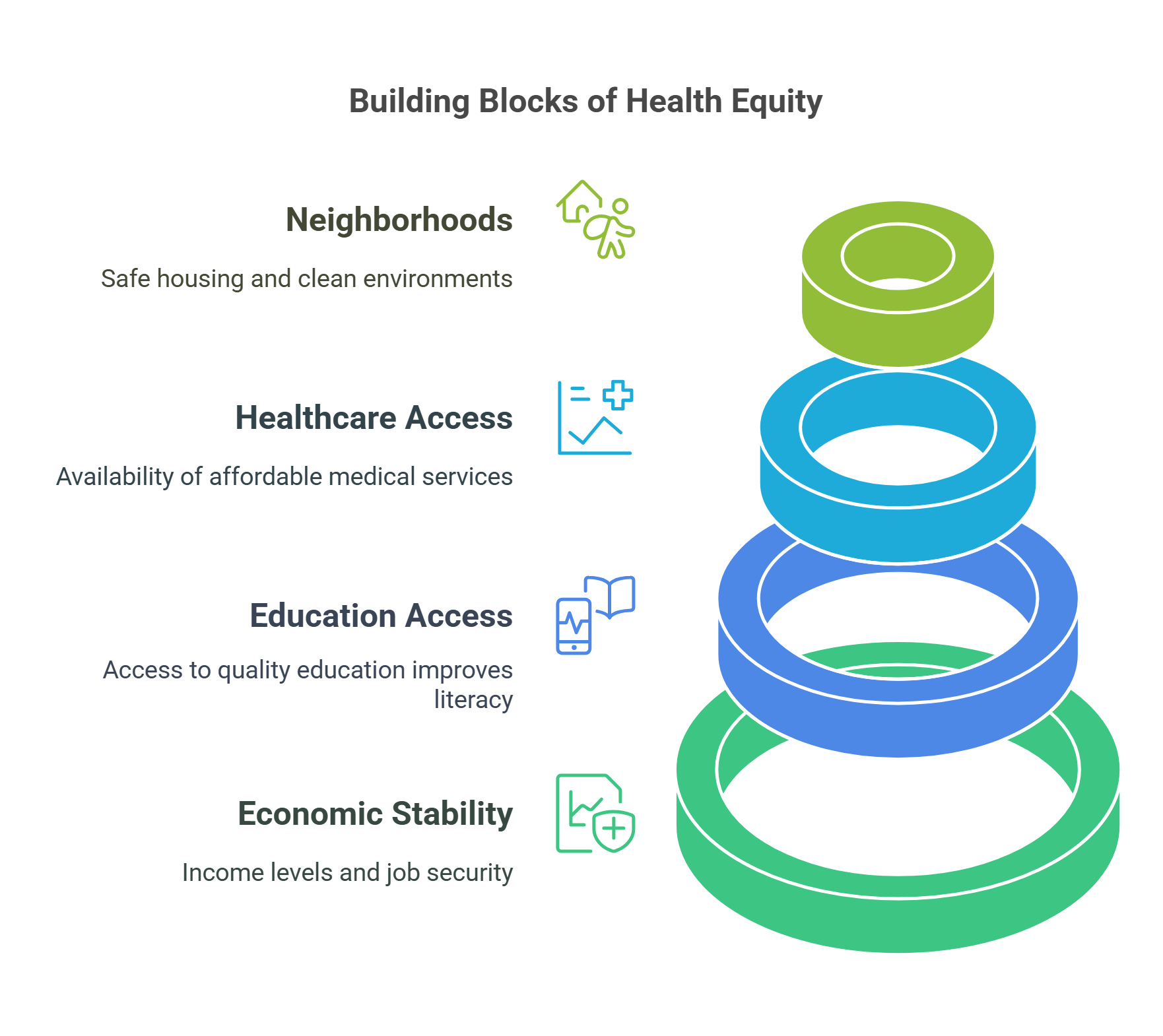
3. Public Health Infrastructure
Public health infrastructure refers to the systems, resources, and personnel required to maintain and improve population health.
- Key Components:
- Healthcare facilities, laboratories, and surveillance systems.
- Trained professionals such as epidemiologists, health educators, and policy-makers.
- Emergency response systems to handle outbreaks and disasters.
- Examples: The Centers for Disease Control and Prevention (CDC) in the U.S. monitors and responds to public health threats.
- Challenges:
- Underfunded infrastructure in low-income regions.
- Workforce shortages in critical areas.
Explained Simply: Public health infrastructure is like the foundation of a house—it needs to be strong to support the health of a population.
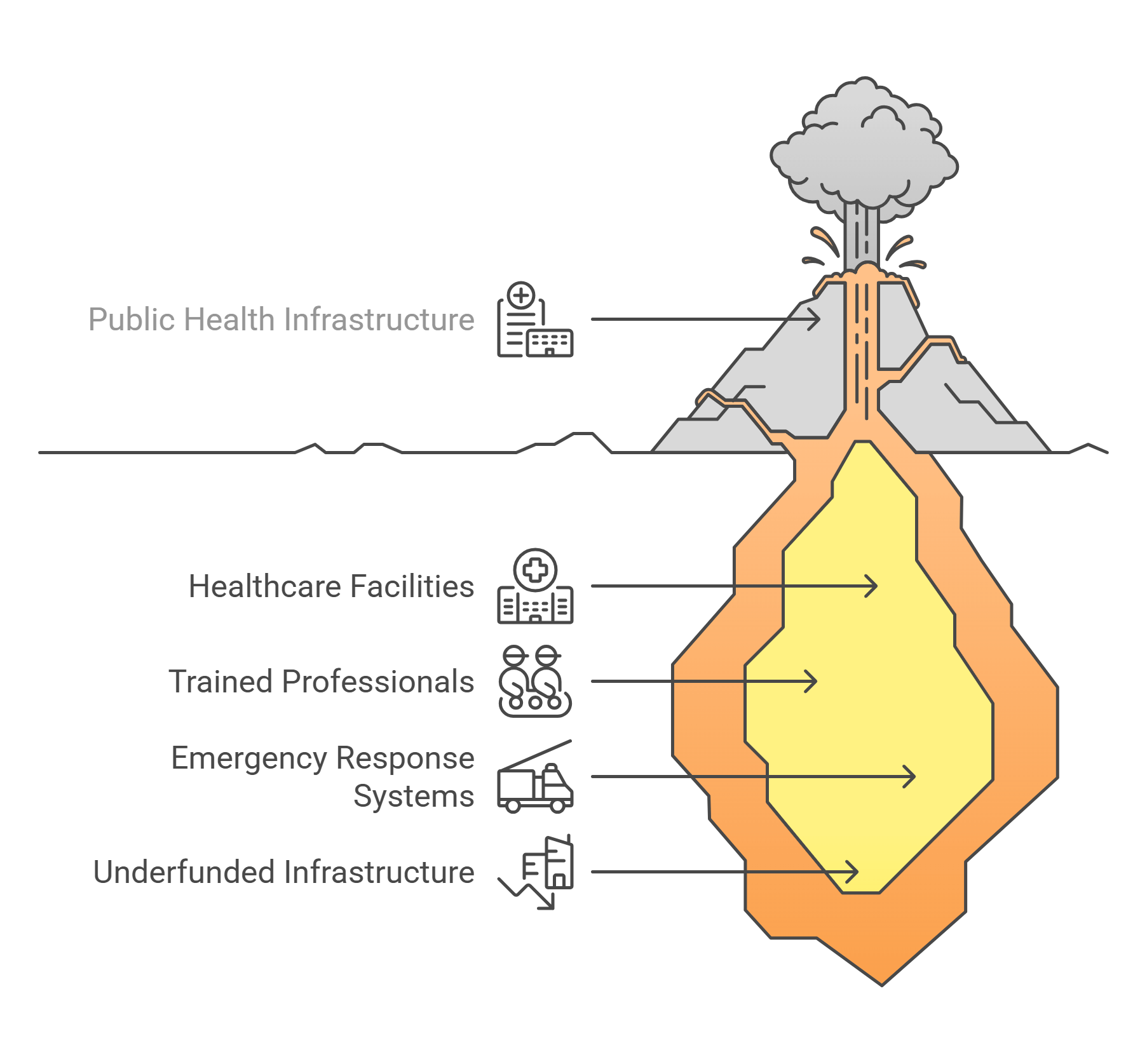
4. Disease Prevention and Control
Disease prevention and control are central to public health, aiming to reduce the incidence and impact of illnesses through proactive measures.
- Prevention Levels:
- Primary Prevention: Preventing diseases before they occur (e.g., vaccination, health education).
- Secondary Prevention: Early detection and treatment (e.g., cancer screenings).
- Tertiary Prevention: Managing and reducing complications of existing diseases (e.g., rehabilitation programs).
- Strategies:
- Public health campaigns to promote handwashing and hygiene.
- Quarantine measures during infectious disease outbreaks.
Examples: The eradication of smallpox through global vaccination campaigns.
Explained Simply: Disease prevention is like fixing problems before they happen, saving lives and resources.
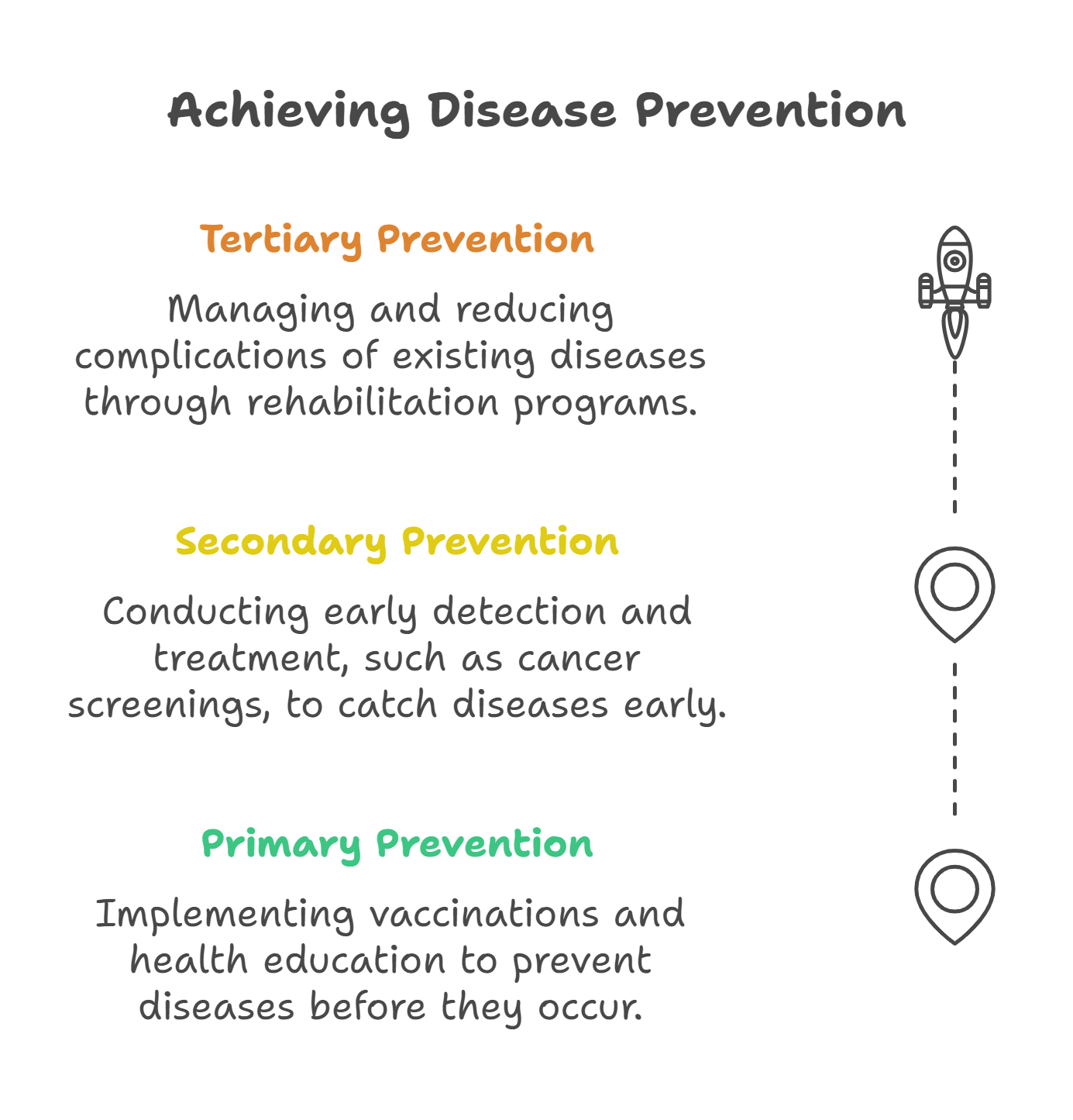
5. Health Equity and Disparities
Health equity ensures that everyone has the opportunity to achieve optimal health, regardless of their background or circumstances.
- Health Disparities: Differences in health outcomes linked to socioeconomic status, race, gender, or geography.
- Examples:
- Higher maternal mortality rates among Black women in the U.S. compared to White women.
- Rural communities facing limited access to healthcare facilities.
- Solutions: Expanding access to affordable healthcare and addressing systemic biases in medical treatment.
Explained Simply: Health equity is about leveling the playing field so everyone can live a healthy life.
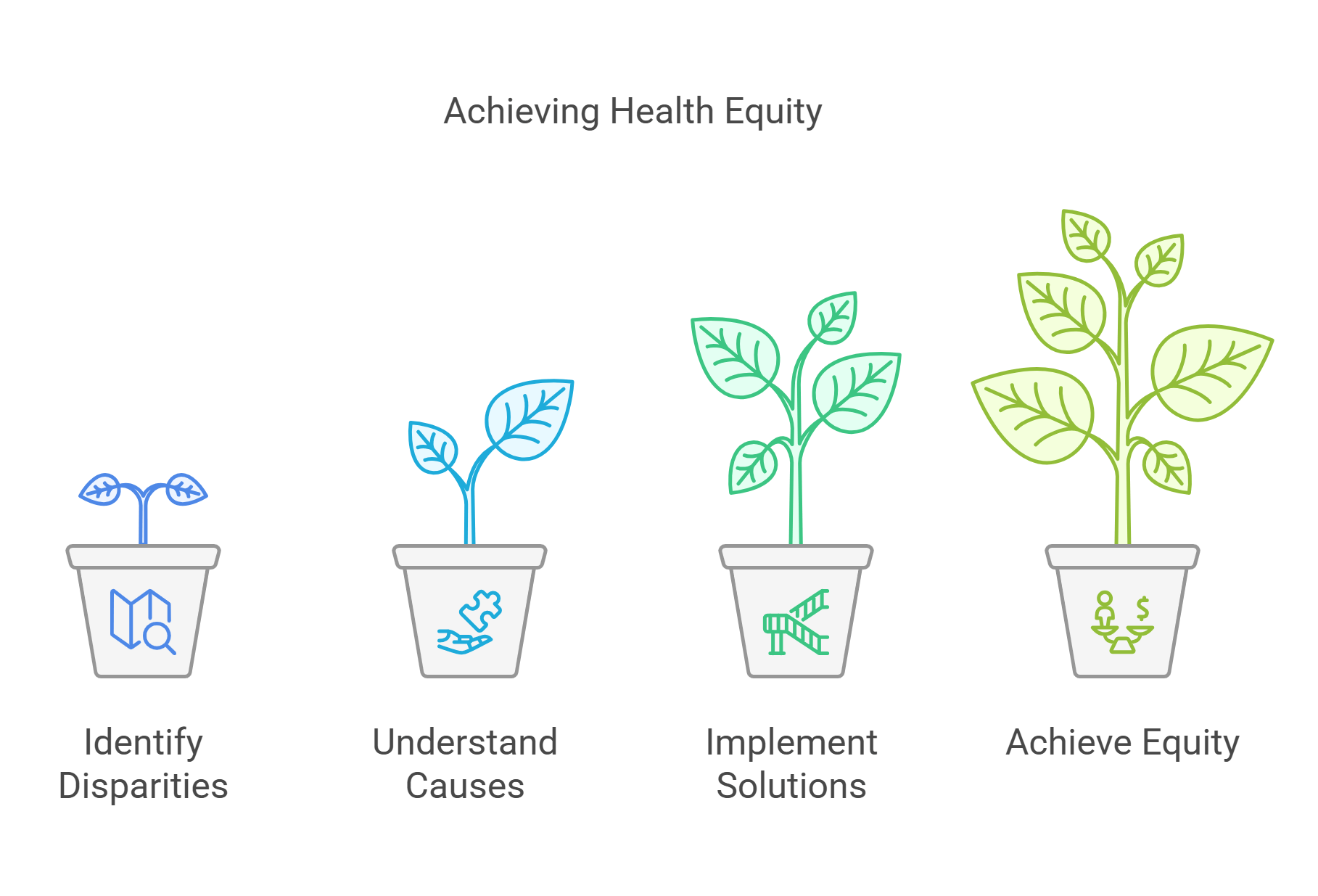
6. Global Health and International Cooperation
Global health addresses health issues that transcend national borders, requiring international collaboration to tackle challenges like pandemics and chronic diseases.
- Key Organizations:
- World Health Organization (WHO): Coordinates global health efforts and provides technical support.
- UNICEF: Focuses on child health and immunization programs.
- Examples:
- The Global Fund’s efforts to combat AIDS, tuberculosis, and malaria.
- COVAX initiative to ensure equitable distribution of COVID-19 vaccines.
Impact: International cooperation strengthens responses to global health crises and improves overall resilience.
Explained Simply: Global health is like teamwork on a global scale to tackle shared health challenges.
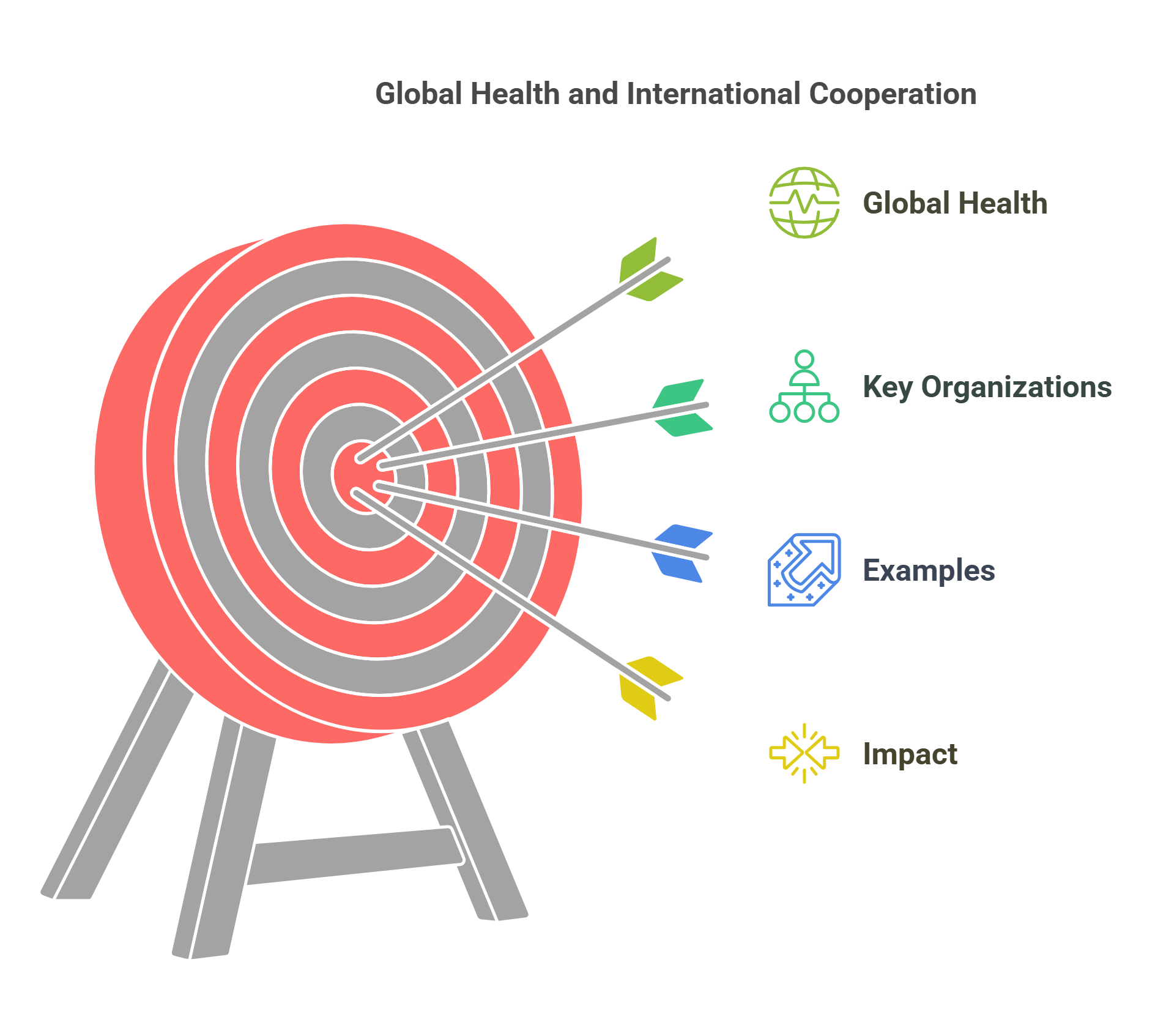
7. Role of Vaccination in Public Health
Vaccination is one of the most effective tools in public health, preventing the spread of infectious diseases and saving millions of lives annually.
- Benefits:
- Reduces disease transmission within communities (herd immunity).
- Protects vulnerable populations, such as the elderly and immunocompromised.
- Examples:
- Polio eradication in many parts of the world due to widespread immunization.
- Annual flu vaccines reducing hospitalizations and deaths.
- Challenges:
- Vaccine hesitancy driven by misinformation.
- Inequitable access to vaccines in low-income countries.
Explained Simply: Vaccination is like a shield that protects individuals and communities from harmful diseases.
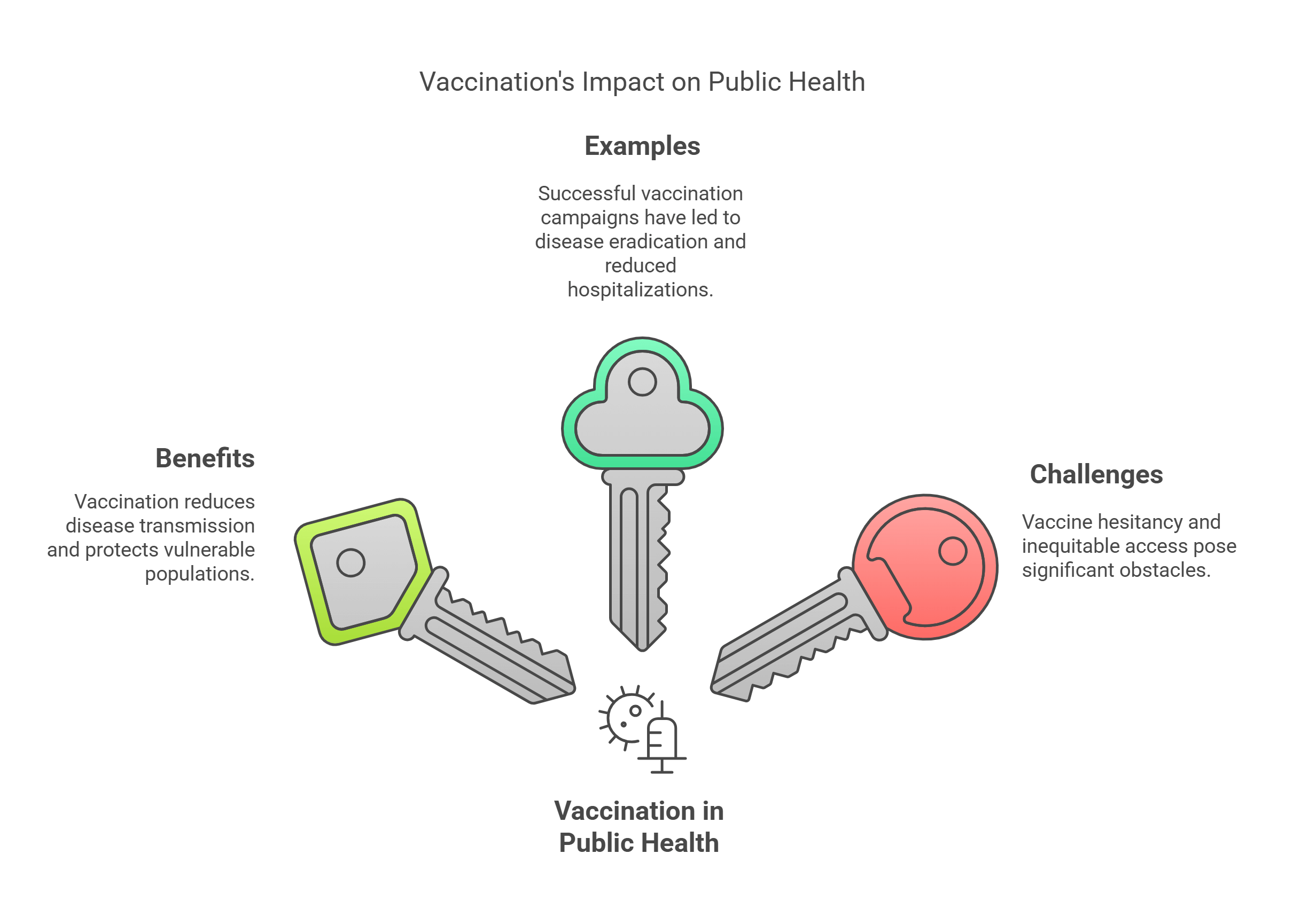
8. Behavioral and Mental Health in Public Health
Behavioral and mental health are integral to overall well-being, with public health initiatives addressing factors that affect mental health.
- Key Issues:
- Stress, anxiety, and depression linked to social and economic pressures.
- Substance abuse and addiction as public health concerns.
- Strategies:
- Community support programs and mental health awareness campaigns.
- Policies to reduce stigma and increase access to counseling and treatment.
- Examples:
- Public health campaigns promoting mindfulness and stress reduction.
- Opioid crisis interventions in affected communities.
Explained Simply: Behavioral and mental health are like the unseen aspects of health that need care and attention to thrive.
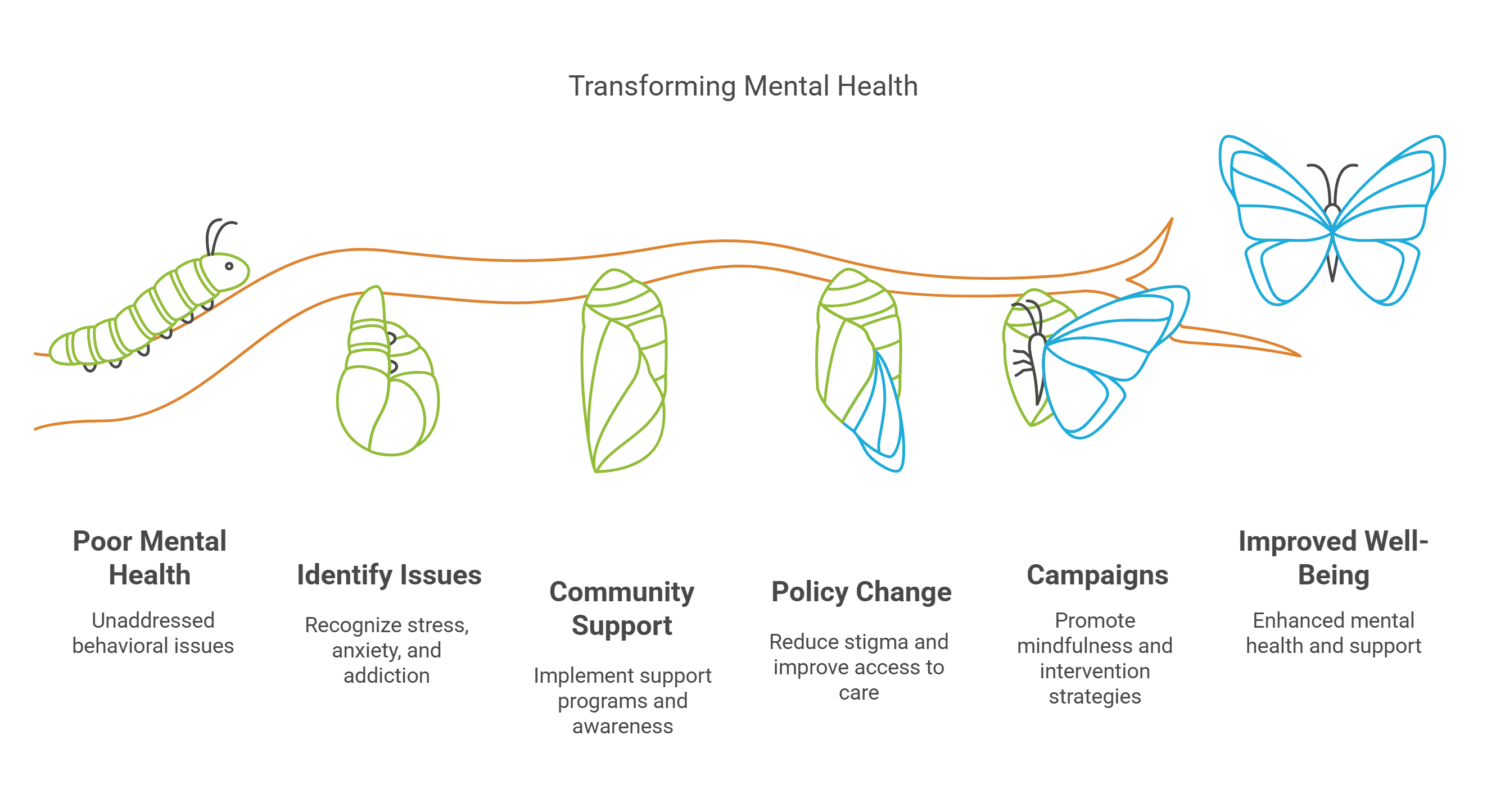
9. Public Health Policy and Advocacy
Policies and advocacy efforts shape the effectiveness of public health initiatives by influencing laws, funding, and public attitudes.
- Key Areas:
- Tobacco control policies, such as smoking bans and taxation.
- Nutrition programs promoting healthy diets to combat obesity.
- Climate change policies addressing environmental health risks.
- Examples:
- The Affordable Care Act expanded healthcare access in the U.S.
- Anti-tobacco advocacy campaigns reduced smoking rates globally.
- Impact: Policy interventions can address systemic issues and improve population health on a large scale.
Explained Simply: Public health policies are like roadmaps guiding societies toward better health outcomes.
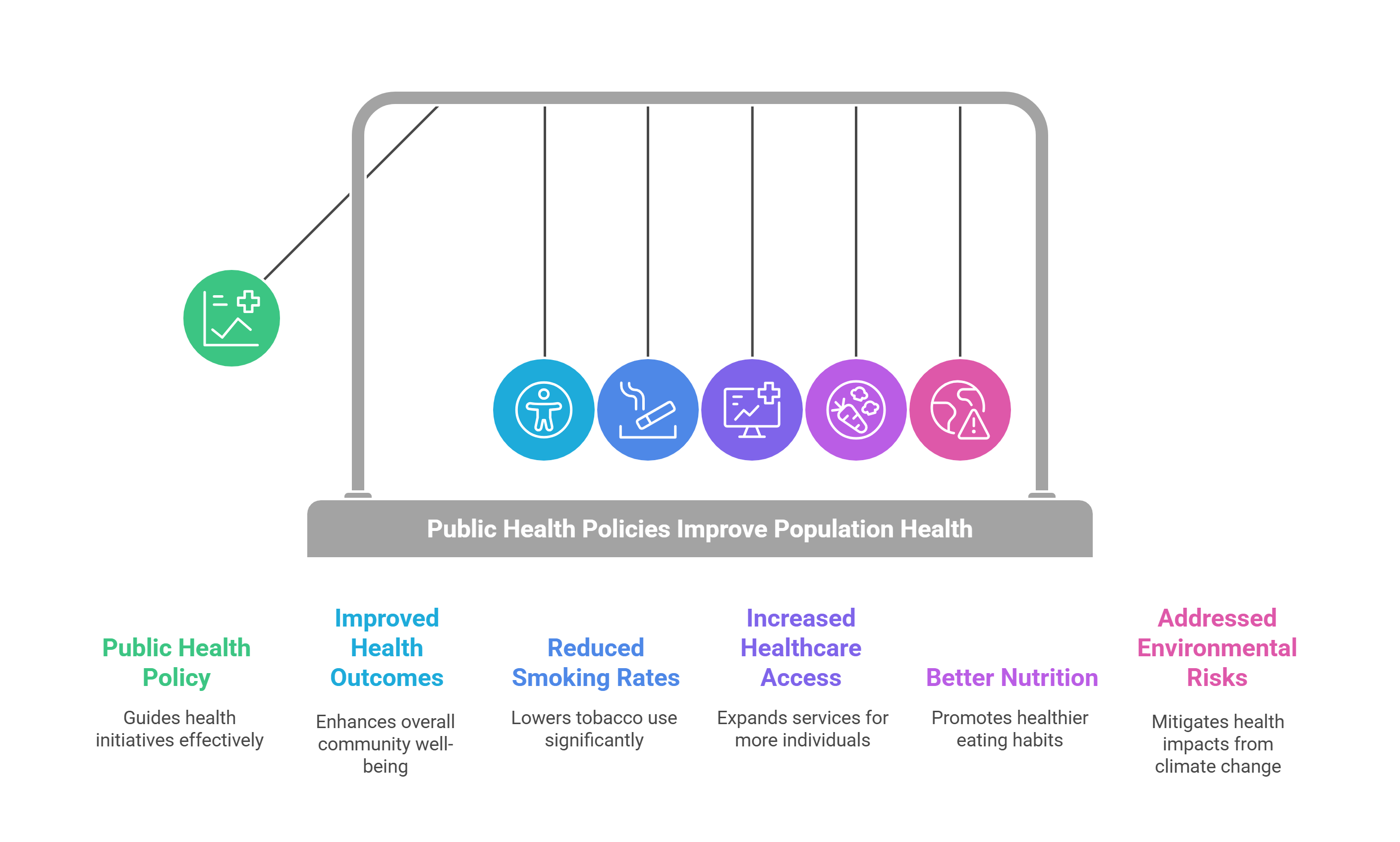
10. Challenges in Modern Public Health
Public health faces complex challenges due to evolving societal, environmental, and technological factors.
- Key Challenges:
- Emerging infectious diseases like COVID-19.
- Rising rates of chronic illnesses such as diabetes and heart disease.
- Health misinformation spreading through social media.
- Limited funding and workforce shortages in low-income regions.
- Examples:
- Combating vaccine hesitancy to improve immunization rates.
- Addressing air pollution’s impact on respiratory health.
- Solutions:
- Strengthening global health systems and promoting health literacy.
- Investing in research and innovation to tackle new health threats.
Explained Simply: Modern public health challenges are like a puzzle that requires collaboration and innovation to solve.
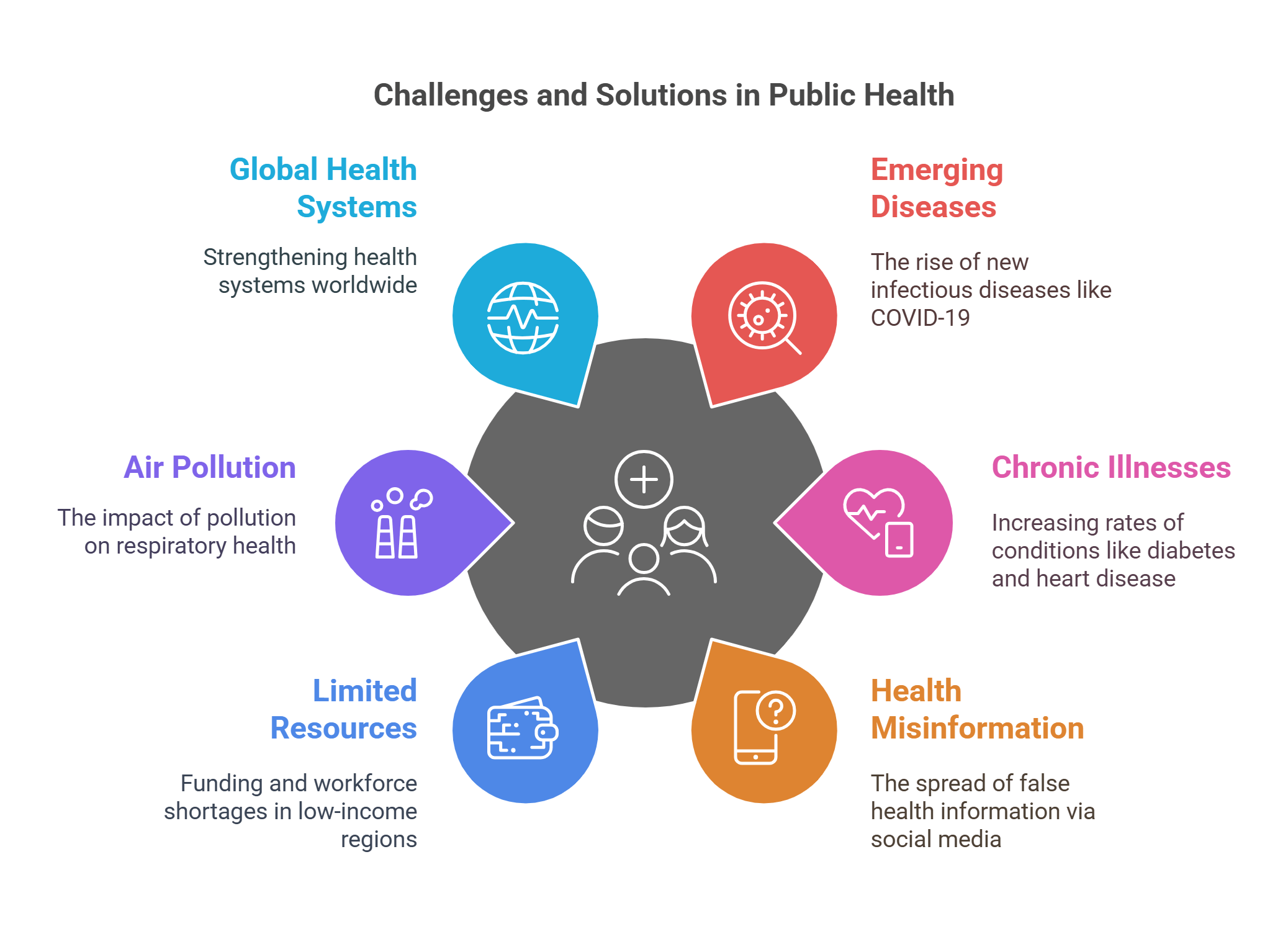
✨ Conclusion
Public health is the backbone of a thriving society, aiming to improve collective well-being by addressing systemic barriers and promoting healthy behaviors. By understanding concepts such as social determinants, disease prevention, and global cooperation, readers can better analyze RC passages on this critical topic. Public health initiatives require a collaborative effort involving individuals, communities, and governments to tackle challenges and create equitable opportunities for all. As we navigate modern health crises and long-term challenges, investing in public health ensures a healthier, more resilient future for everyone. 🌍










